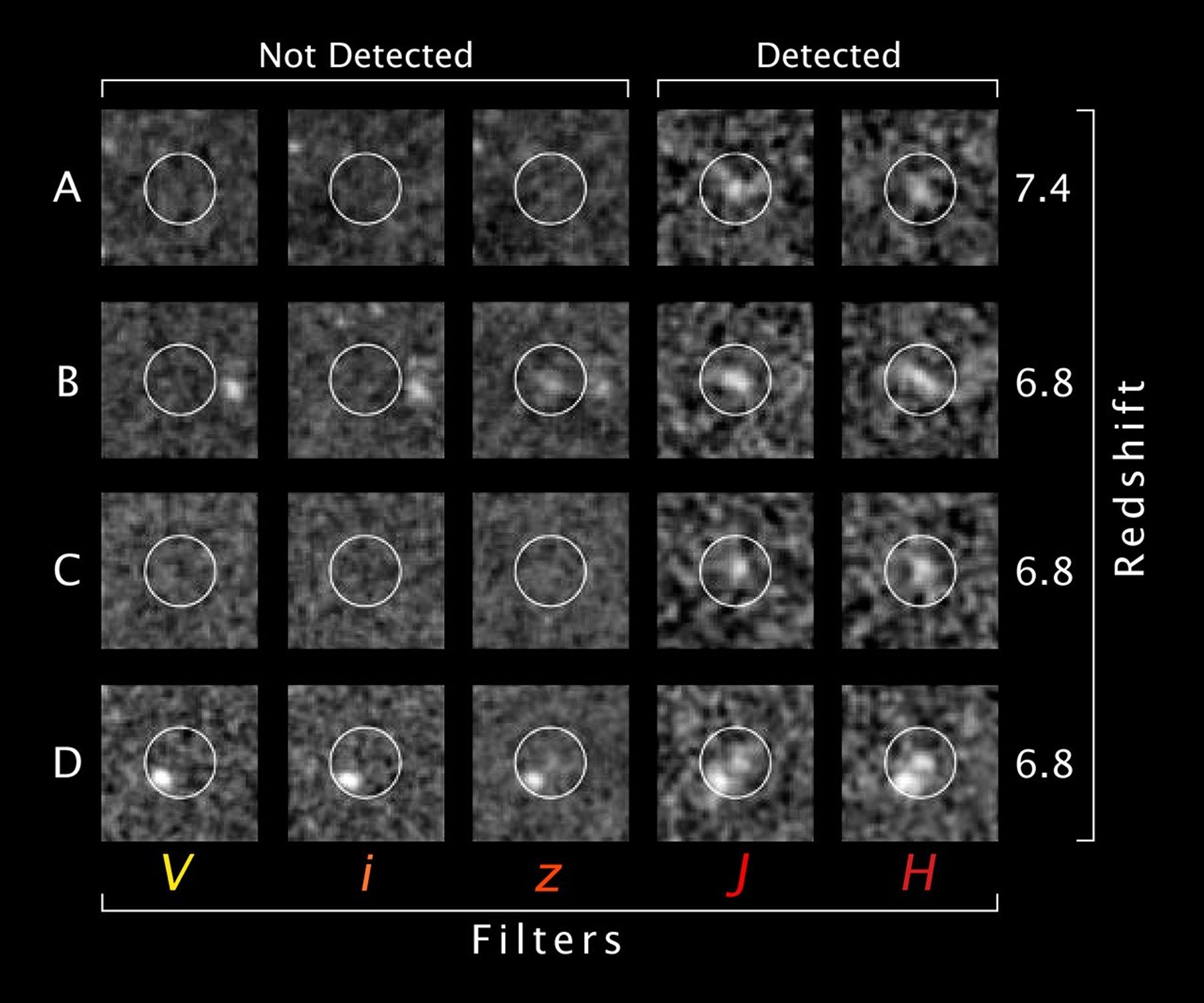1 min read
Candidate High-Redshift Galaxies

This panel shows four candidate galaxies that are likely to have redshifts of 7 and thus have emitted their light when the universe was just 750 million years old. Astronomers can determine when light was emitted from a distant source by its redshift, a measure of how the expansion of the universe stretched the wavelengths of the light as it traveled through space across vast distances.
Each of the four candidate high-redshift galaxies are presented in a distinct row. All four candidate galaxies are shown using images at each of five different wavelengths (591 nm, 776 nm, 944 nm, 1119 nm, and 1604 nm). These galaxies are all clearly detected at wavelengths redder than 1000 nm (indicated by the J and H filters), but remain completely undetected at wavelengths bluer than 800 nm (indicated by the V, i and z filters). This abrupt drop-off in the flux is strongly characteristic of star-forming galaxies at high redshifts and occurs due to the absorption of light by the large amounts of neutral hydrogen in the universe at early times. Astronomers use the presence of this break to find high-redshift galaxies. The present sources were found over the Hubble Ultra Deep Field and the Great Observatory Origins Deep Survey Fields. The search is described in the September 14, 2006 issue of Nature.
- Release DateSeptember 13, 2006
- Science ReleaseTracing the Evolution of the First Galaxies in the Universe
- Credit
Share
Details
Claire Andreoli
NASA’s Goddard Space Flight Center
Greenbelt, Maryland
claire.andreoli@nasa.gov




























